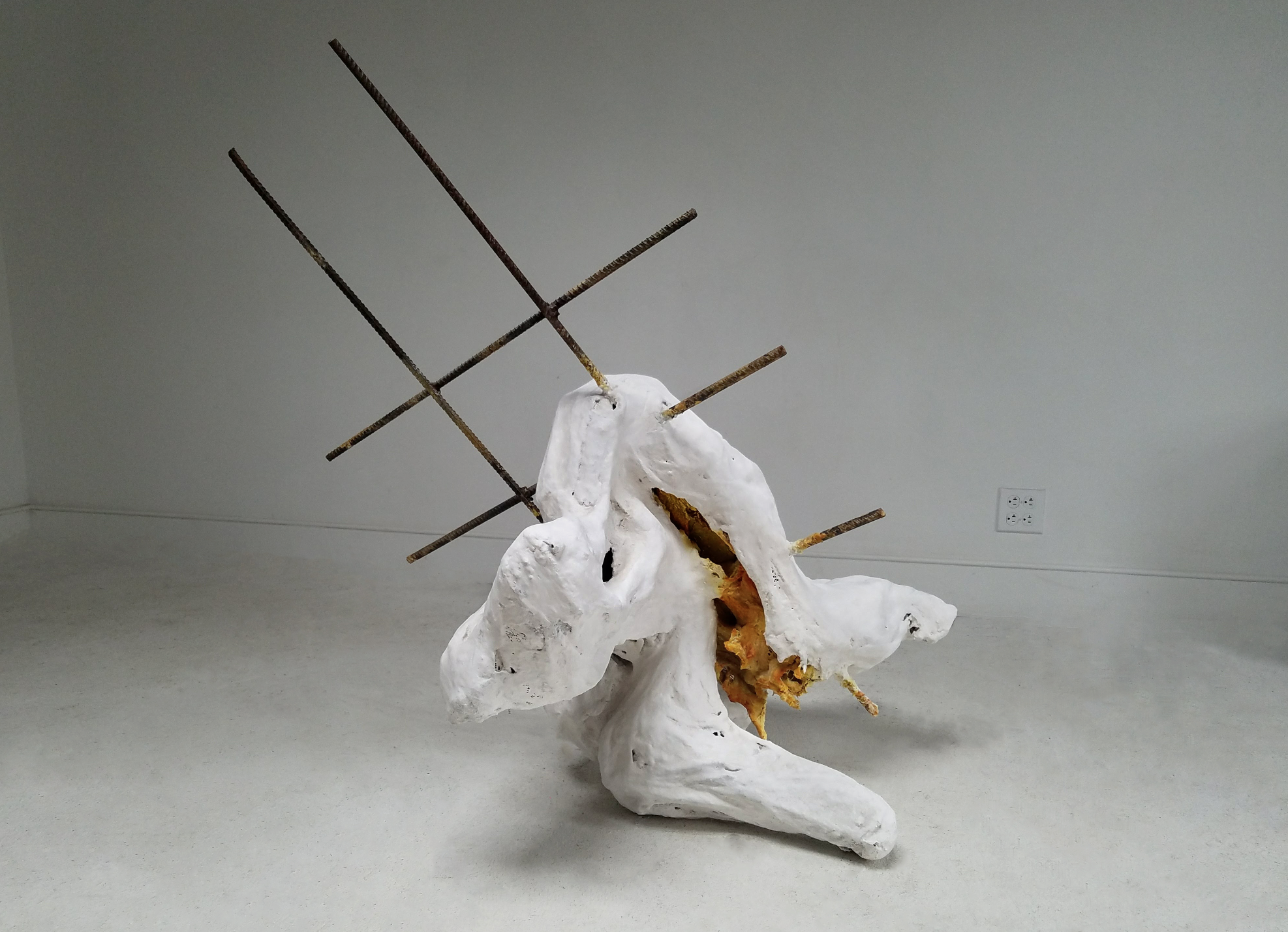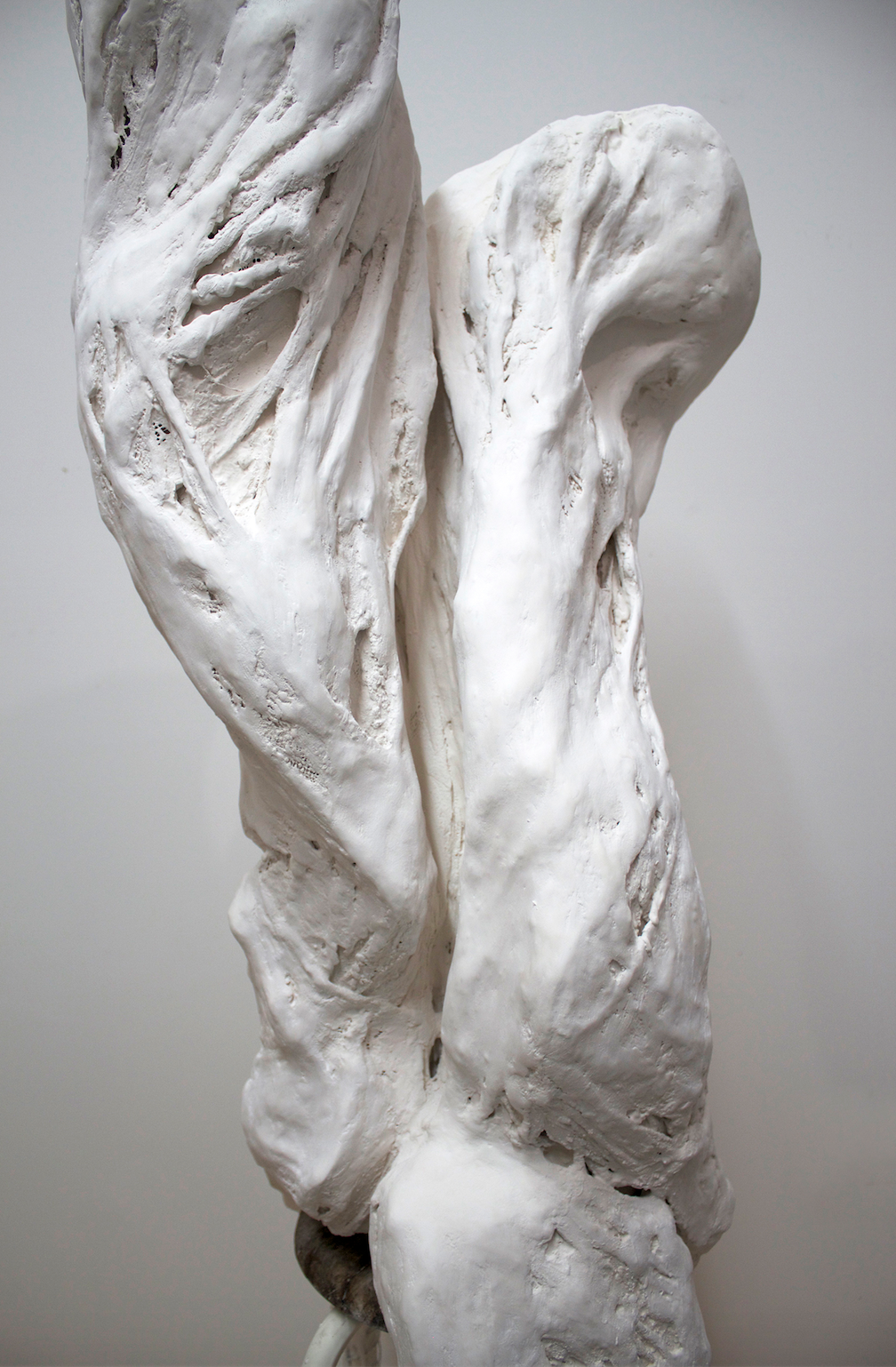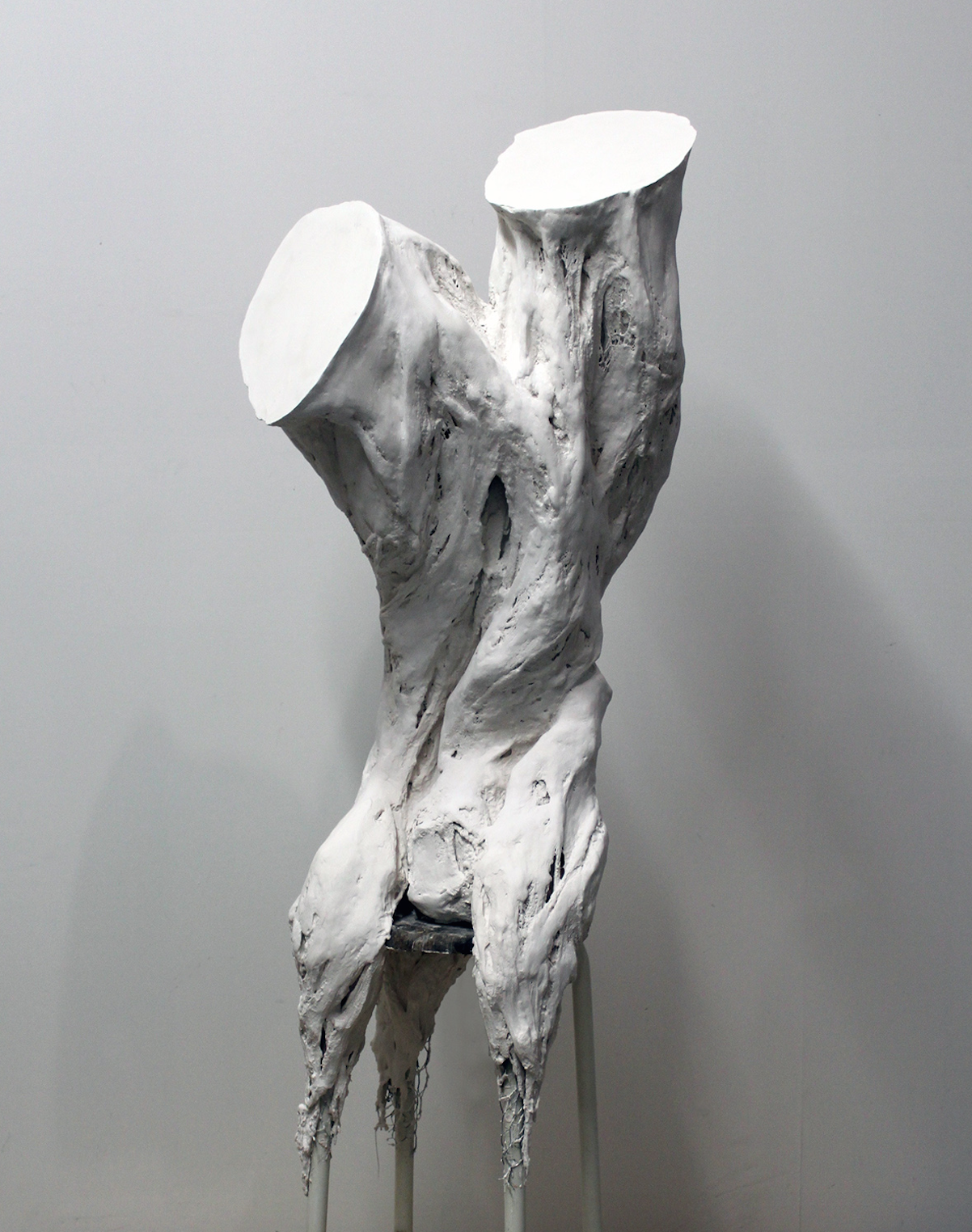Alexandra Leyre Mein
Bio:
Alexandra Leyre Mein received a master’s in Fashion design from the Royal Academy of Antwerp, Belgium before she started her career as a visual artist in 2008. She participated in the studio residency program at School of Visual Arts in NYC, The Loft in Brussels, Belgium and in Thaillywood in Chonburi, Thailand. Alexandra’s work was exhibited throughout the US, Asia and in Europe, Including at Palais d’Iléna – Paris, Aeroplastics, Hangar art center, Maison Particulière and Botanique in Brussels, Léon De Smet Museum in Belgium. At the Clemente center, SVA Westside Gallery, New House Center for Contemporary Art, Anton Kern Gallery in NYC and in Numthong Gallery, Bangkok, Thailand. Alexandra is now working in Brooklyn, USA.

Regridded - 2016 (standing up)
Hydrostone, mesh wire, cloth, rebar, metal, paint, pigments and varnish
55 x 33 x 24 inches

Regridded - 2016 (standing up)
Hydrostone, mesh wire, cloth, rebar, metal, paint, pigments and varnish
55 x 33 x 24 inches

Regridded - 2016 (lying down)
Hydrostone, mesh wire, cloth, rebar, metal, paint, pigments and varnish
55 x 33 x 24 inches

Myofibril I - 2014 (detail)
Hydrostone, mesh wire, cheese cloth, found stool and metal
70 x 24 x 26 inches

Myofibril I - 2014
Hydrostone, mesh wire, cheese cloth, found stool and metal
70 x 24 x 26 inches
Statement:
Alexandra Leyre Mein works centers around the human body, sculptors’ original subject. She creates movement in the stillness of her sculptures by portraying the everlasting battle between human unconscious desires and the intellectual self. The movement and tension emerging from the encounter between organic forms and clean edged shapes in her plaster sculptures also symbolize human nature and its societal/environmental interactions. The unfinished aspect in her sculptures reinforces the feeling of movement, as in a 3-dimensional sketch. They can be interpreted as if still in construction and growing, although they might also be seen as being at the dawn of their decomposition. This duality of interpretation is central to her work.